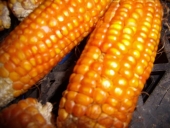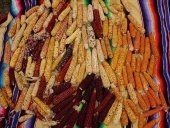
 7
7





 4
4




 3
3




Joseph Lofthouse wrote:Lovely project. Great color scheme.
I have noticed that plants containing an overabundance of purple in the leaves tend to grow slowly and produce poorly. In coolish climates, a bit of purple in the leaves tends to favor productivity.
 4
4




Nothing ruins a neighborhood like paved roads and water lines.
 3
3




Mark Reed wrote:Hey Mathew, great to hear from you!
Those purple husks look just like those on the pure strain of the old Mexican landrace that I used because of its natural worm resistance. The ears look very similar as well as far as size and shape, but the kernel type is way different. Pure Zapalote Chico is a soft flour corn with a bit of a dent. I select to keep those purple husks because once I lost the short fat shape of ZC it's the only hint its genetics are still in there, well other than that the worms don't bother it.
 3
3




Dirty hands + a sweaty handkerchief = hope for the future.
 2
2




Cy Cobb wrote:I'll likely try some fried as corn nuts, as a side dish of just hominy with butter & diced ham, & as an ingredient in stews.
What is everyone's take on dark red corn flavor when nixtamalized as hominy? I read that Hopi Blue flint has 30% more protein than other corns. Have you noticed different flavors with different colors?
 1
1




Mathew Trotter wrote:
With Cascade Ruby-Gold, the color is in the outer layer, and it's the reason why each cob is a solid color in spite of the fact that there are many colors overall, whereas if the color was underneath you'd end up with a mix of colors on a single cob, as you see with other landraces.
Nothing ruins a neighborhood like paved roads and water lines.
 1
1




Mark Reed wrote:Not quite, I don't think. the outer layer, or pericarp is most often transparent or translucent enough that if the aleurone layer, or even the endosperm varies the ear will show up different shades of the same color. Aleurone is a thin layer of cells under the pericarp and from what I've seen is the most variable and unpredictable of all. If there is no color in the aleurone layer but the endosperm varies between yellow and white the ear might be two shades of the pericarp color. If there is color in the aleurone and it is variable, you might get lots of shades.
Carol's CRG is colorless in the aleurone as I recall, with uniform endosperm. All CRG I've seen from anywhere other than directly from Carol is contaminated with color in the aleurone, so the ears show up with multiple shades.




Nothing ruins a neighborhood like paved roads and water lines.

|
He was giving me directions and I was powerless to resist. I cannot resist this tiny ad:
The new purple deck of permaculture playing cards
https://www.kickstarter.com/projects/paulwheaton/garden-cards
|








